Yosemite
We’ve said it before but one of the great attractions of travelling in the US is the national parks. On the top of that list for many people is Yosemite National Park in the heart of the Sierra Nevada Mountains not too far south of Lake Tahoe. Julie and I wanted to take in this magnificent place again and when I scored a three day pass online we were ready to go.
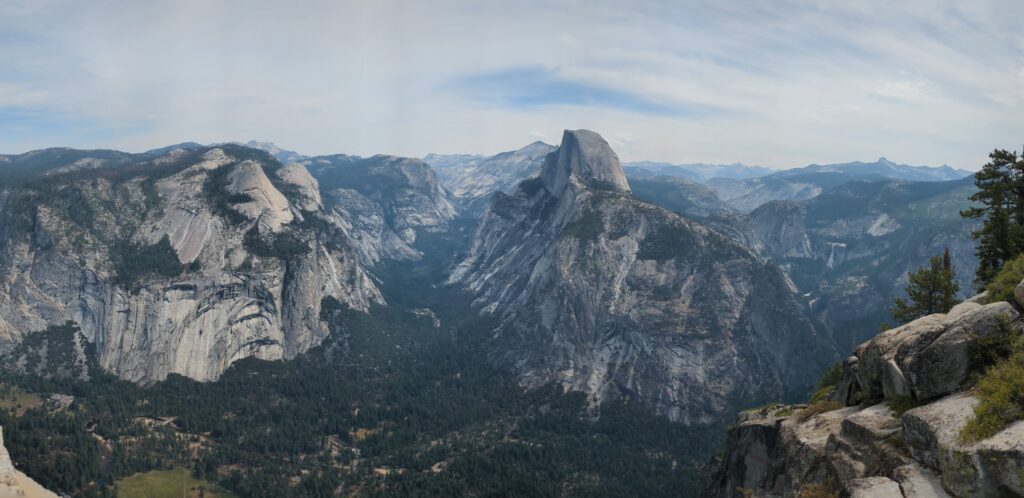
We left the family home in Lake Tahoe after a fabulous extended stay there with family. We were aiming for some of the attractions on the eastern side of the Sierra Nevada, places we had never been, but Yosemite, arguably America’s most famous national park, was our main target.
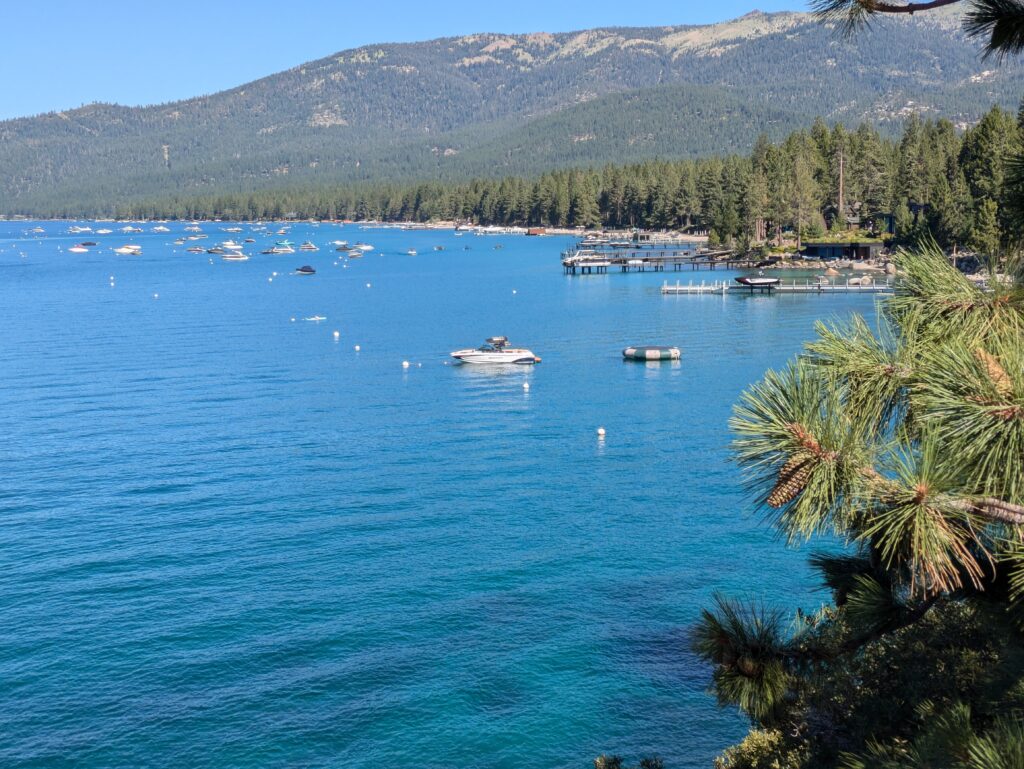
We crossed over into Nevada and followed the eastern coast of Lake Tahoe. Tahoe is a huge mountain lake sitting at 6,225 feet (1,885 metres), the largest alpine lake in North America and at 1,645 feet (500 metres) the second deepest lake in North America. The Lake Tahoe basin acts as the giant bathtub for the lake and the only outflow is the Truckee River (fun fact – water from the Truckee River flows into the huge Great Basin of Nevada and never reaches the ocean).
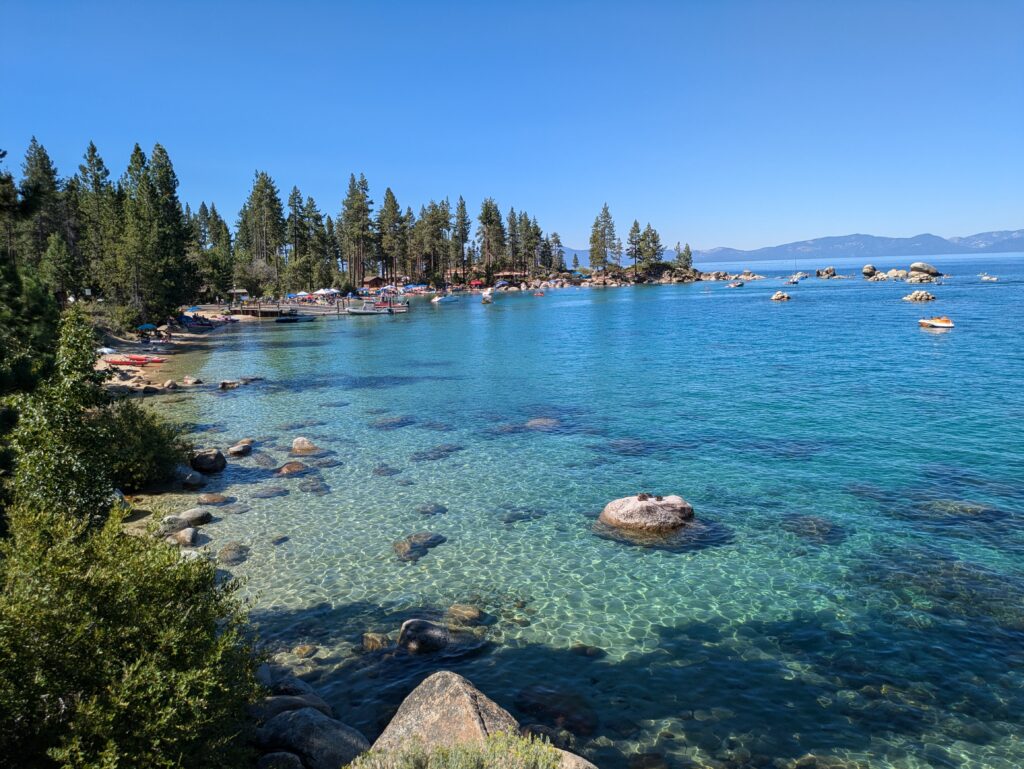
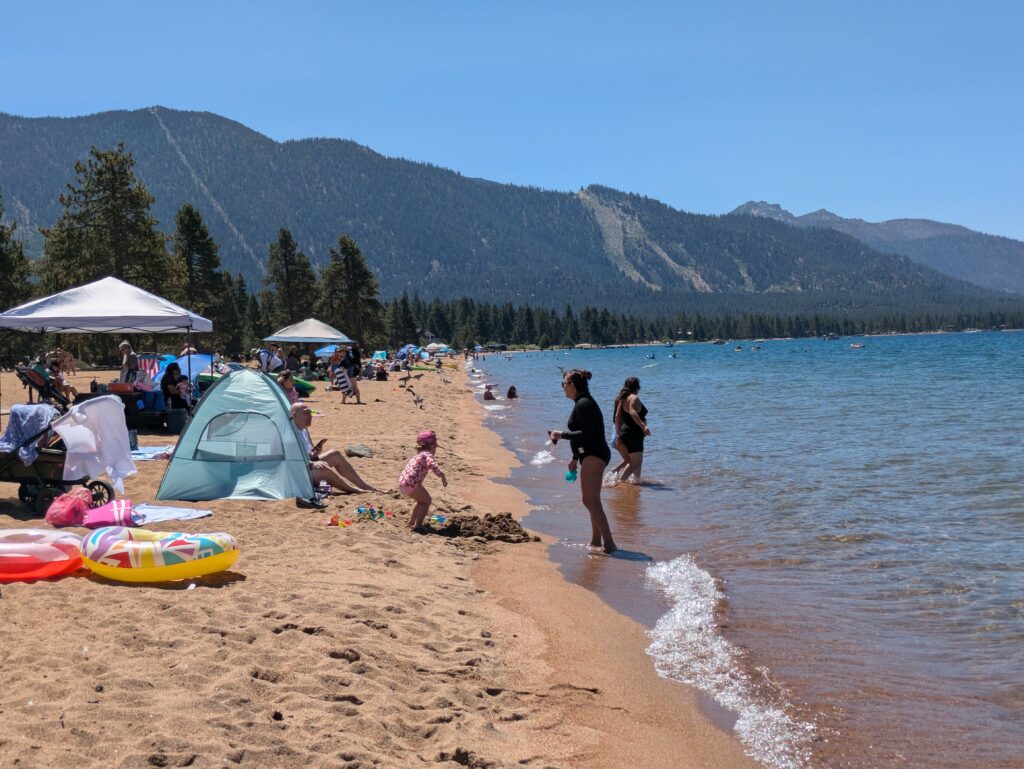
From South Lake Tahoe we followed the winding road over the rim of the basin and down into the desert flatlands of Nevada before heading southward and crossing back into California. We hoicked over another starkly beautiful 8,300 foot pass before dropping down and hooking up with Highway 395 which is the main north-south artery east of the Sierra Nevada. We travelled through the beautiful countryside of the Antelope Valley, passing through small communities that were showing serious signs of neglect before reaching the scenic viewpoint of Mono Lake.
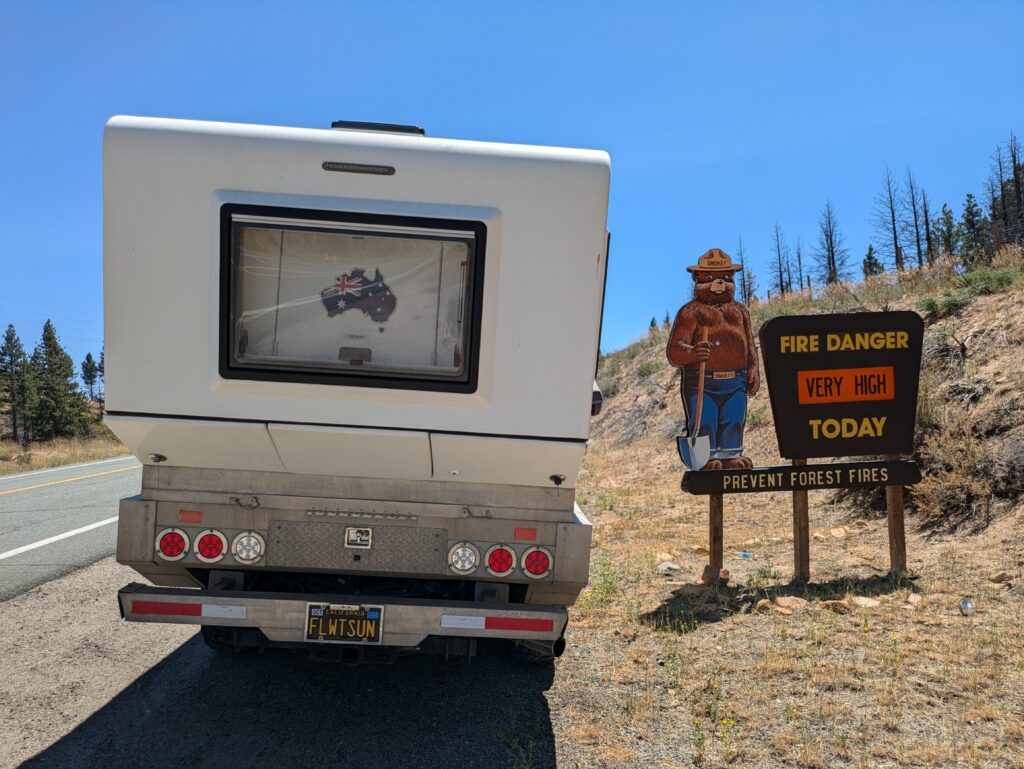
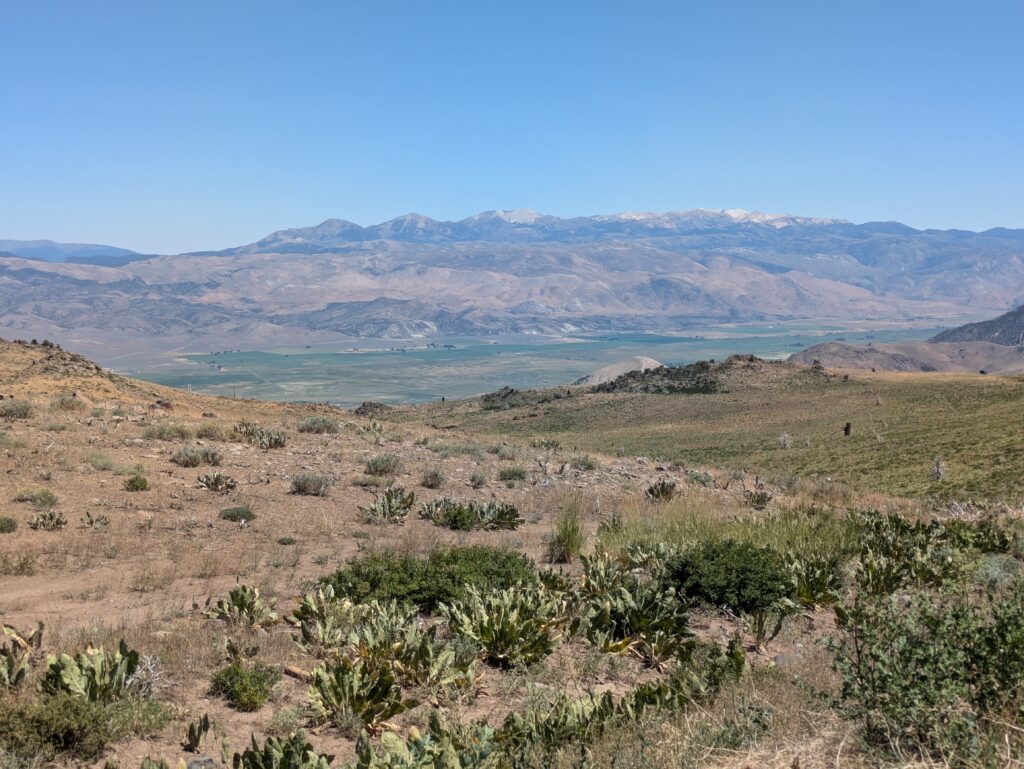
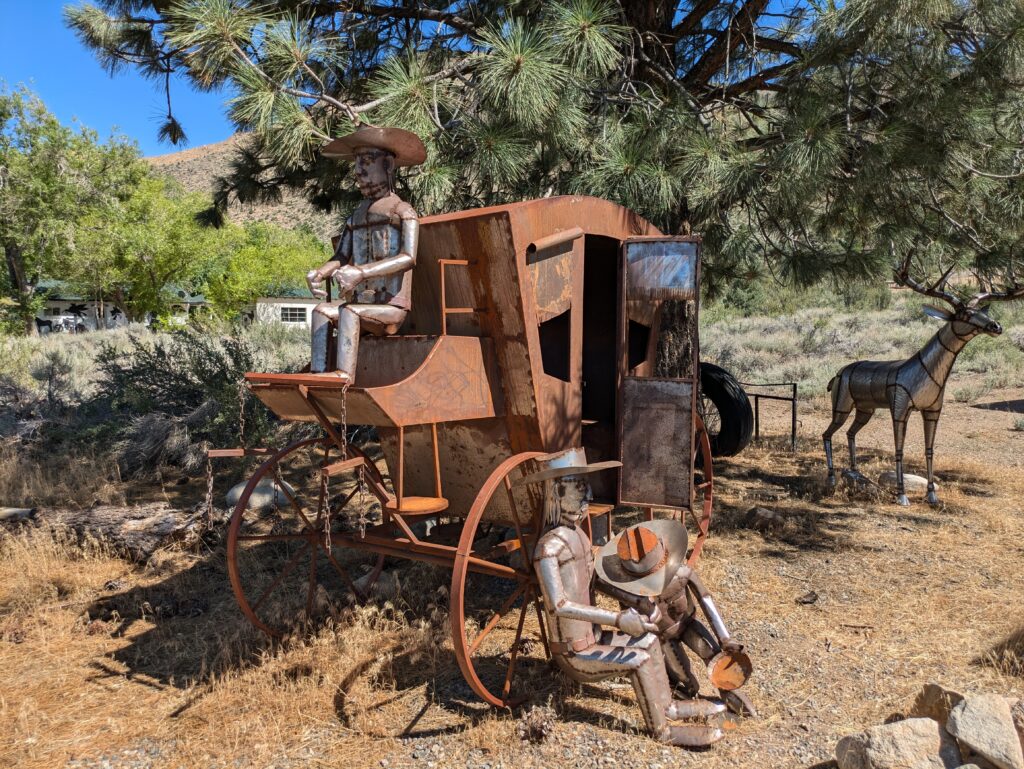
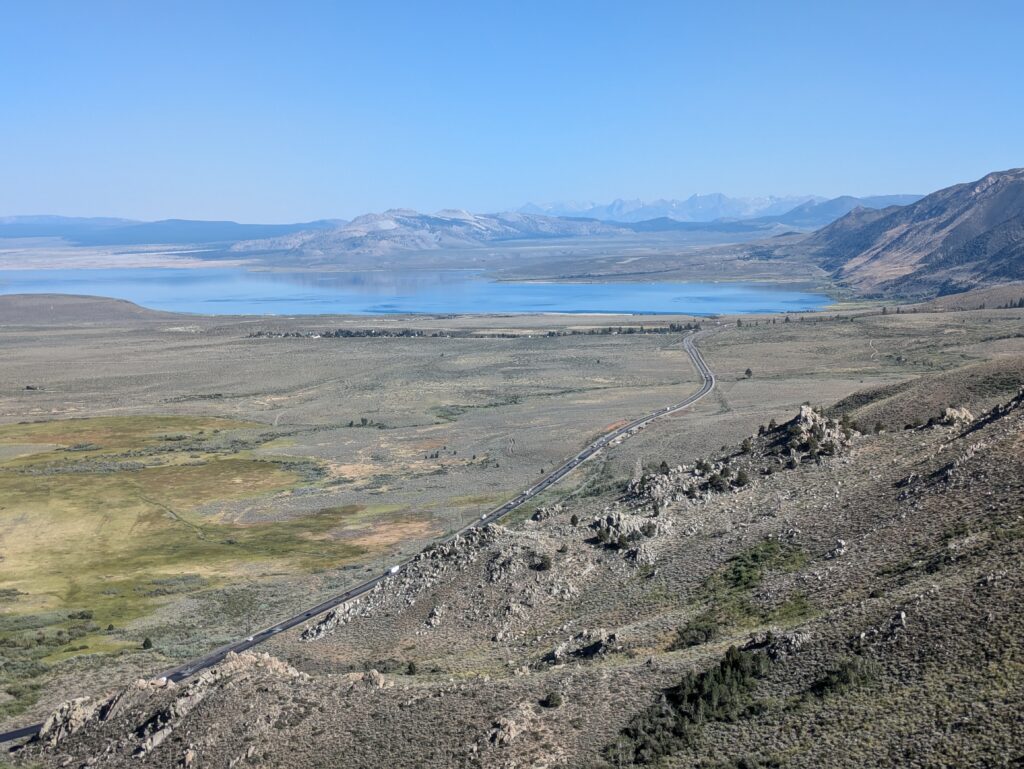
Mono Lake is a fascinating desert lake which collects water from numerous streams and runoffs but like Lake Tahoe only has an outflow to the Great Basin. It has a salinity level twice that of the ocean and supports a very unique set of critters. We pulled into a couple of places to get a better grip on the whole Mono Lake story but couldn’t do the area justice as we had a timed pass for Yosemite National Park the next day.
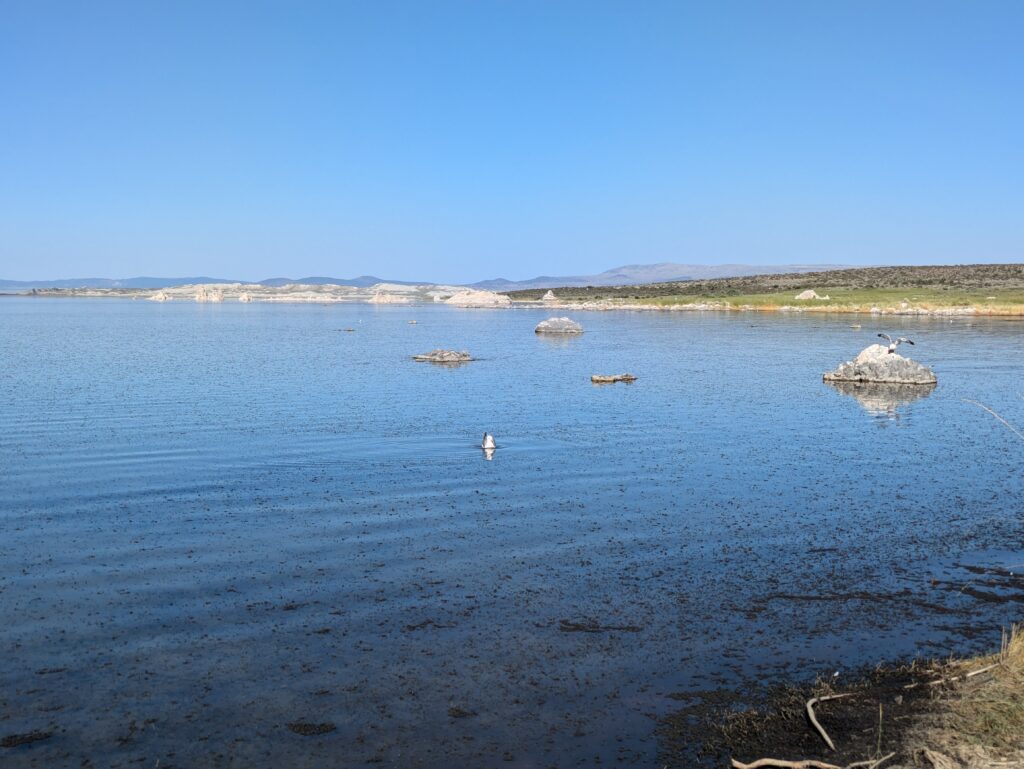
We camped at 8,975 feet (2,735 metres) at a hidden spot off the steep and winding Tioga Pass Road which leads to the eastern entrance of Yosemite. From there we could gape at the stunning mountains around us, almost a teaser to what we would see in the park. And like other national parks in peak season, we had already gone online and elbowed our way to a day pass which would allow us entry for the next three days.
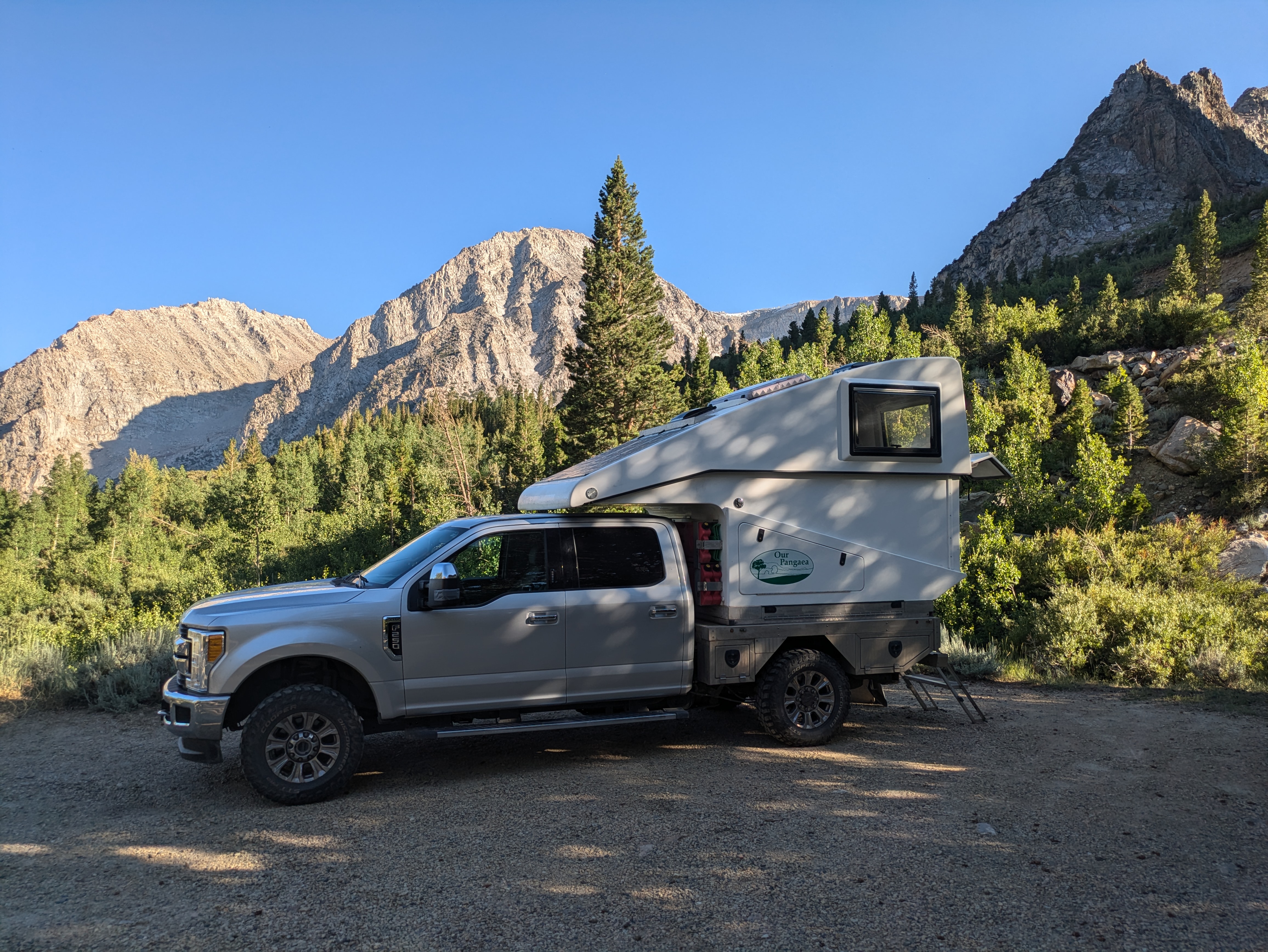
Yosemite is a huge park with endless outdoor opportunities and the valley floor of the glacier-carved granite mountains is in our view one of the most spectacular places on earth. But we were coming in the back door, if you like, over Tioga Pass at 9,945 feet (3,013 metres) and dropping down into the second most popular region of the park, Tuolumne Meadows.
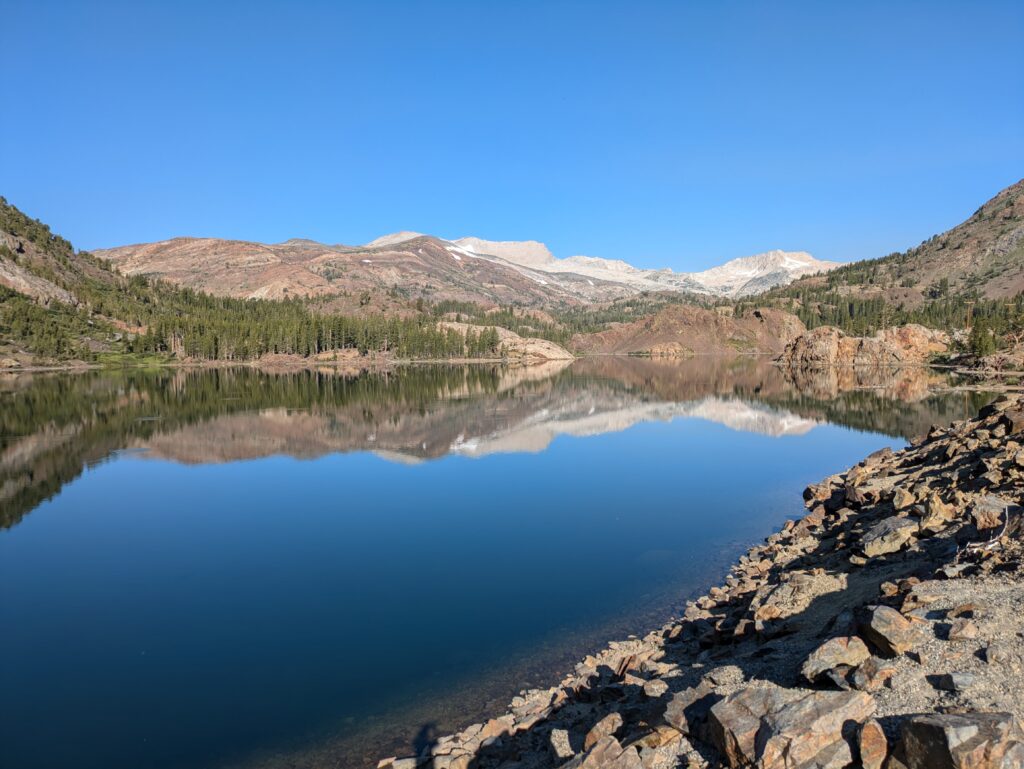
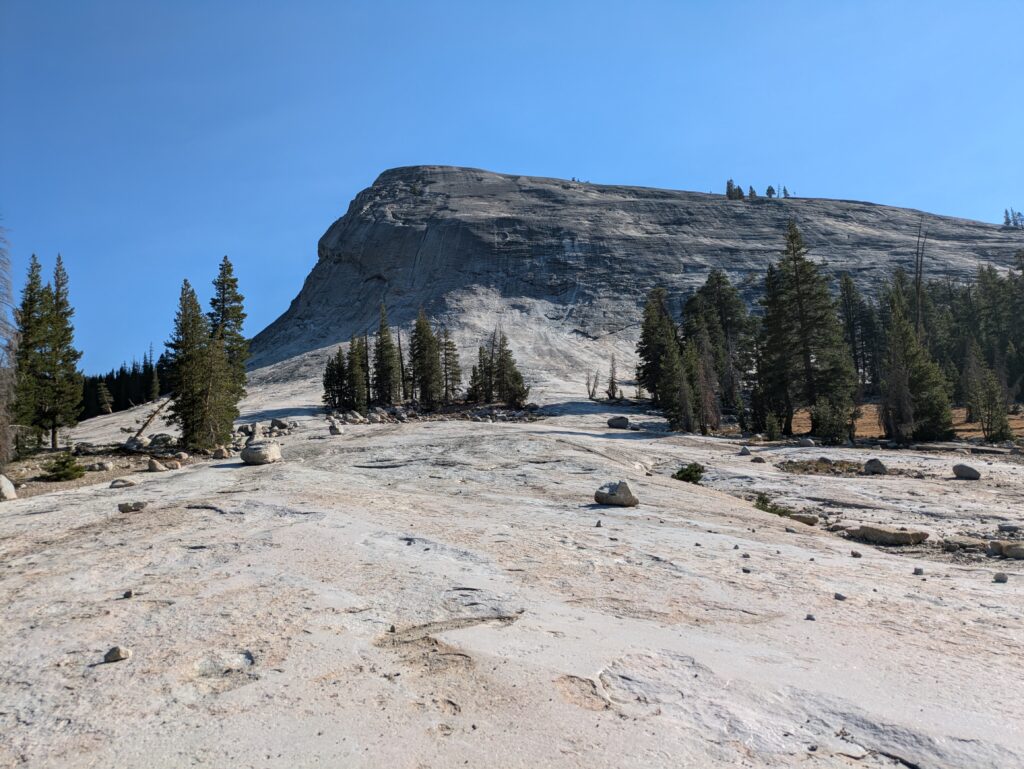
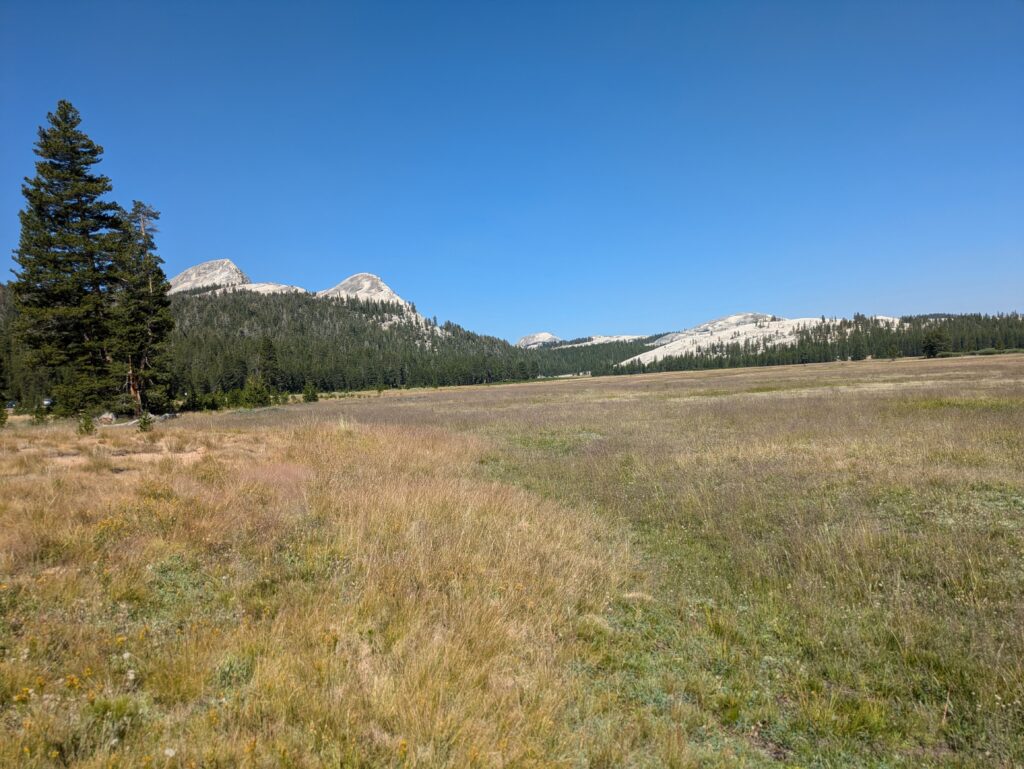
What makes Yosemite so special is the huge granite mountains that were carved by glaciers eons ago, forming 3,000 foot vertical faces and smoothed mountain domes that seem to appear everywhere. And amongst all this grandeur are high elevation alpine lakes, nurtured by melting snow and perched in hidden valleys amongst these sacred mountains.
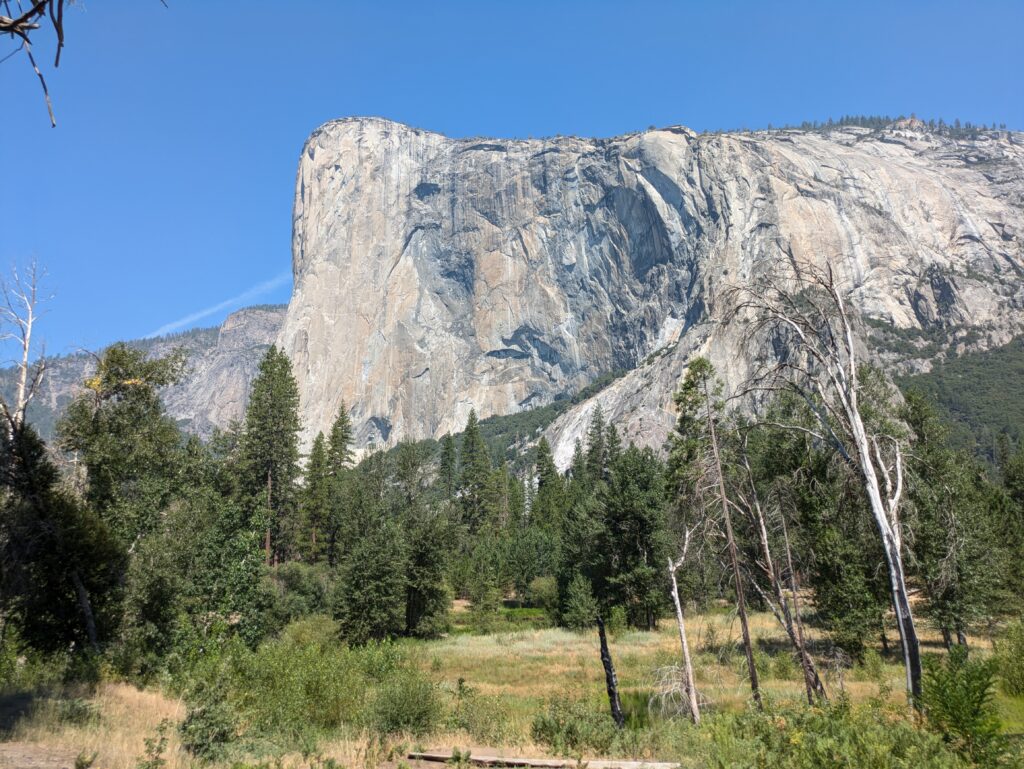
We chose to do the 8.2 mile/13.2 km walk up to Cathedral Lake, one of the absolute gems of the entire park. To get there we gained 1,000 feet in elevation through pine forest and over exposed rock, passing a couple of massive domes on the way. We were huffing and puffing by the time we got there but Cathedral Lake and the imposing Cathedral Peak rising above it made the whole experience worthwhile. A picnic lunch, a soaking of the feet in this icy water and a reluctant walk back down to Tramp. What a great day!
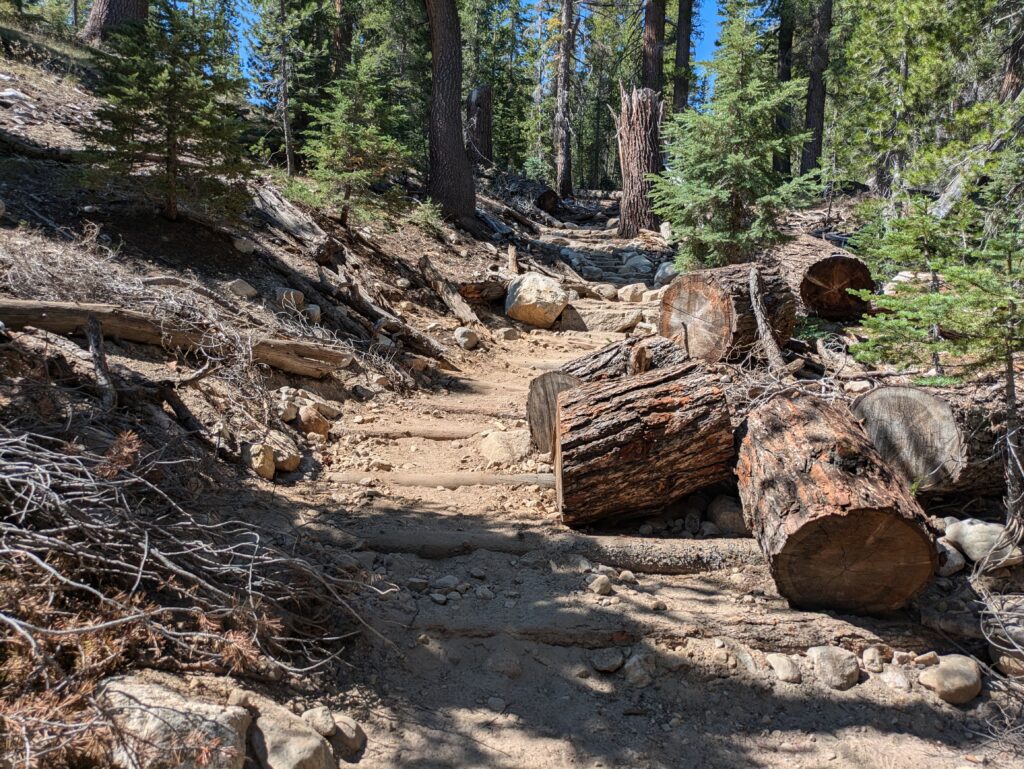
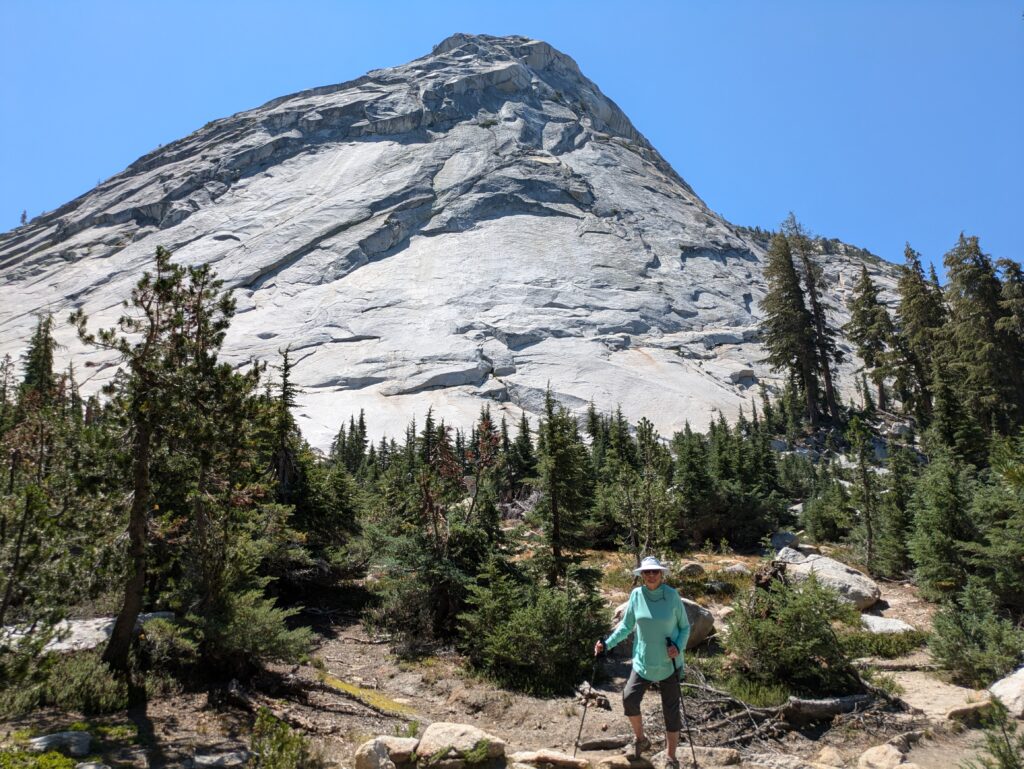
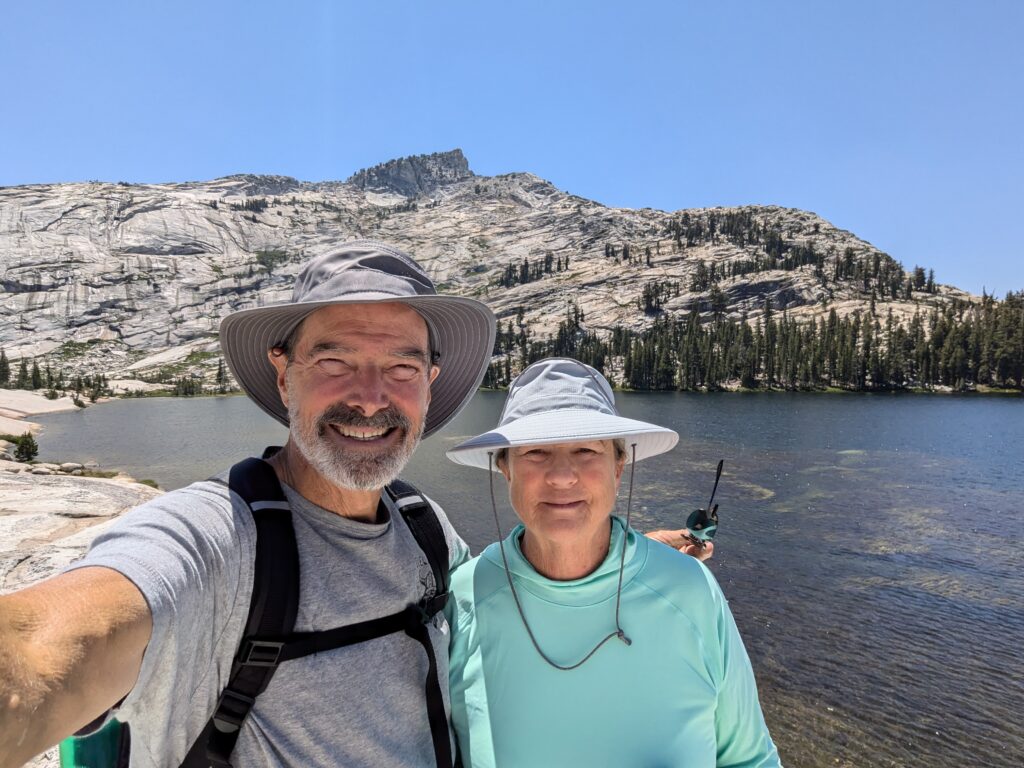
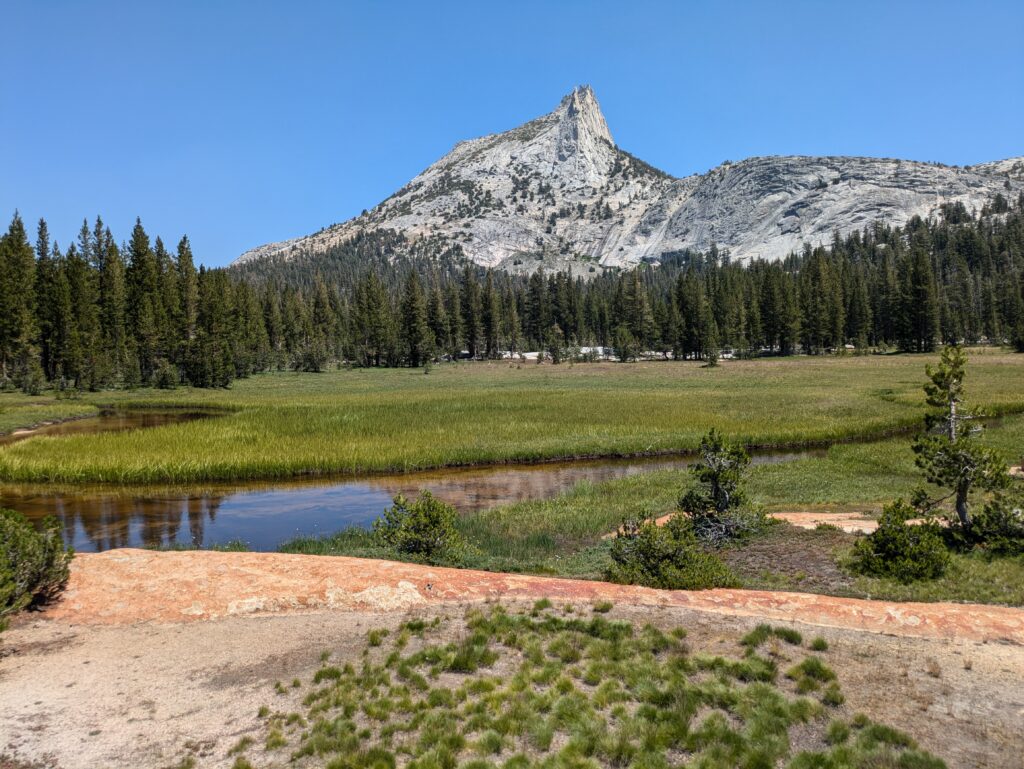
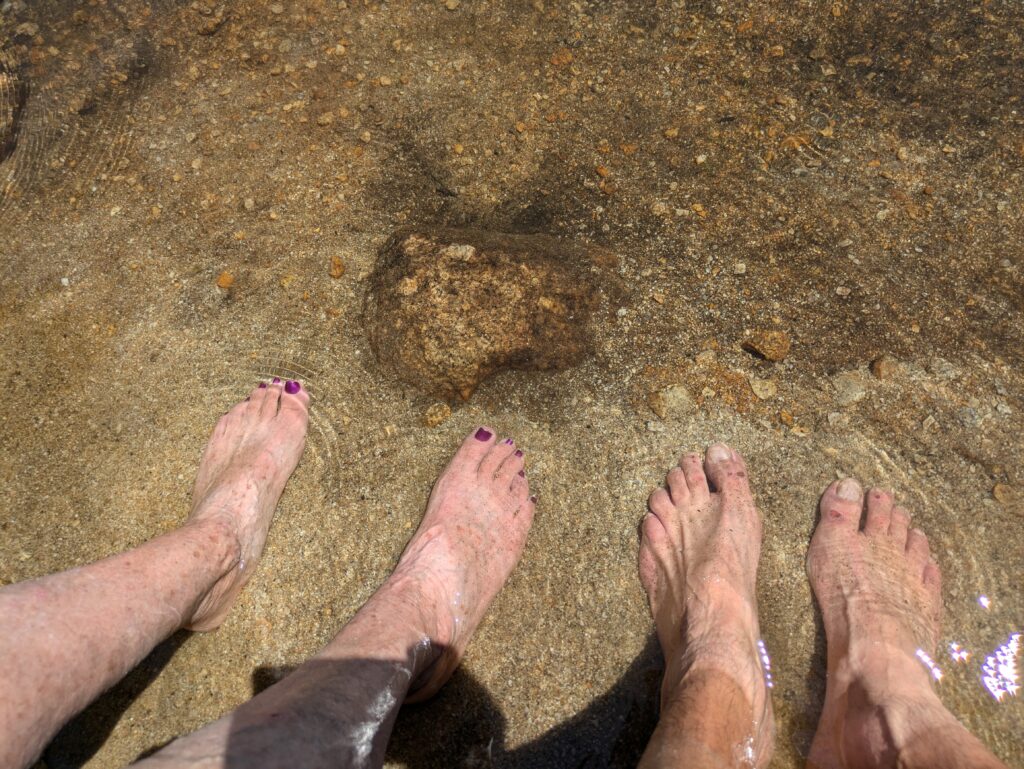
After leaving the park and camping again in the same spot as before we re-entered the park and followed the winding mountain road past numerous amazing lookouts of the carved mountains and wound our way down into famed Yosemite Valley, the stunning heartbeat of this national park. It is here all those eons ago that glaciers carved their way through the valley, leaving behind soaring granite cliffs, towering bald domes and numerous waterfalls, some of which are almost 600 feet high.
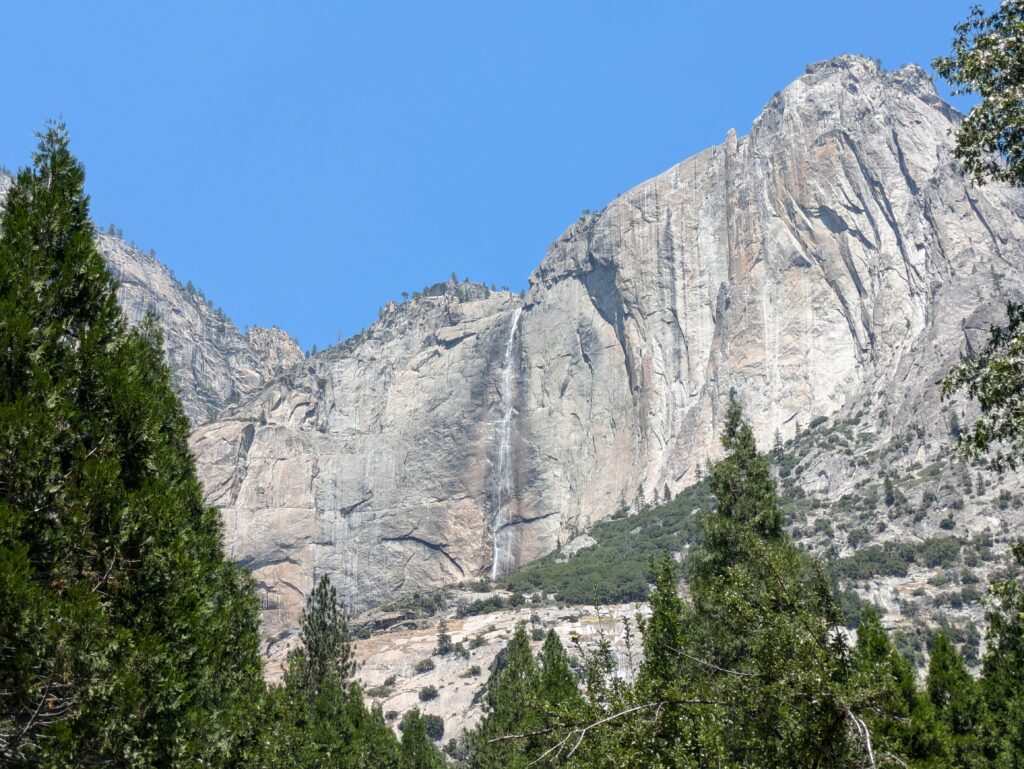
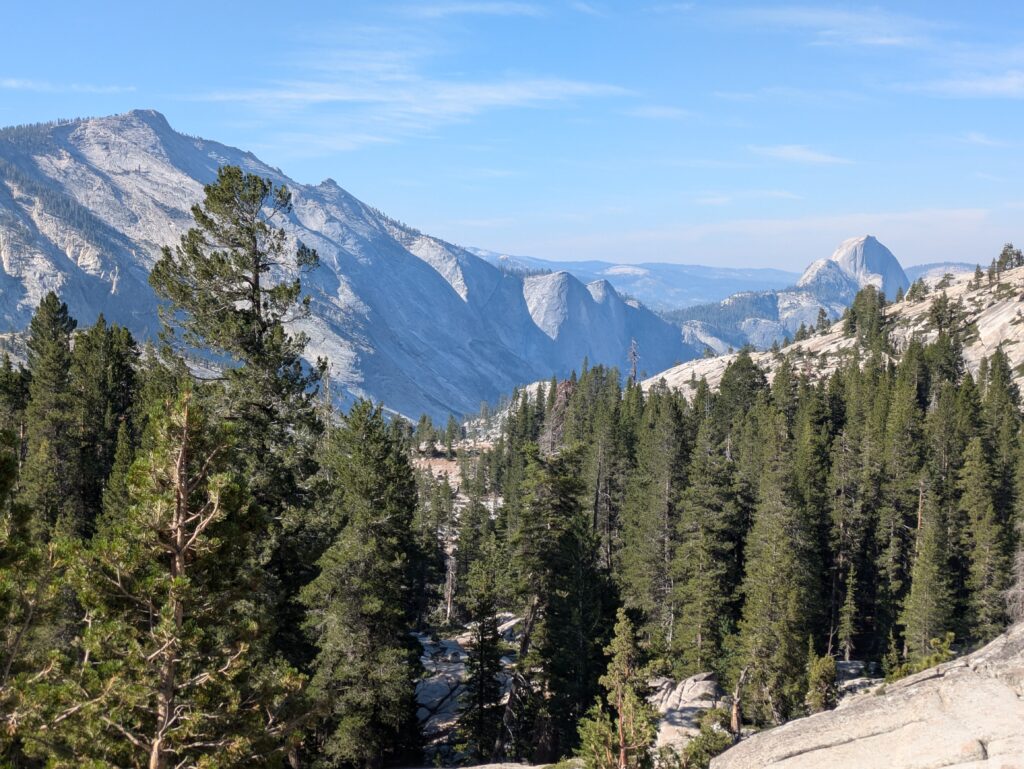
The explorer, naturalist and author John Muir came to the valley in 1870’s to work at a saw mill and over the course of his life worked tirelessly to promote and preserve not just the valley but the entire region. But it’s not just the grandeur of this carved granite that is special. In the southern stretches of the park lie groves of Giant Sequoias, some of the largest and oldest of anything living on earth. Muir’s work, and that of countless others, led this vast wilderness area to be declared a national park in 1890.
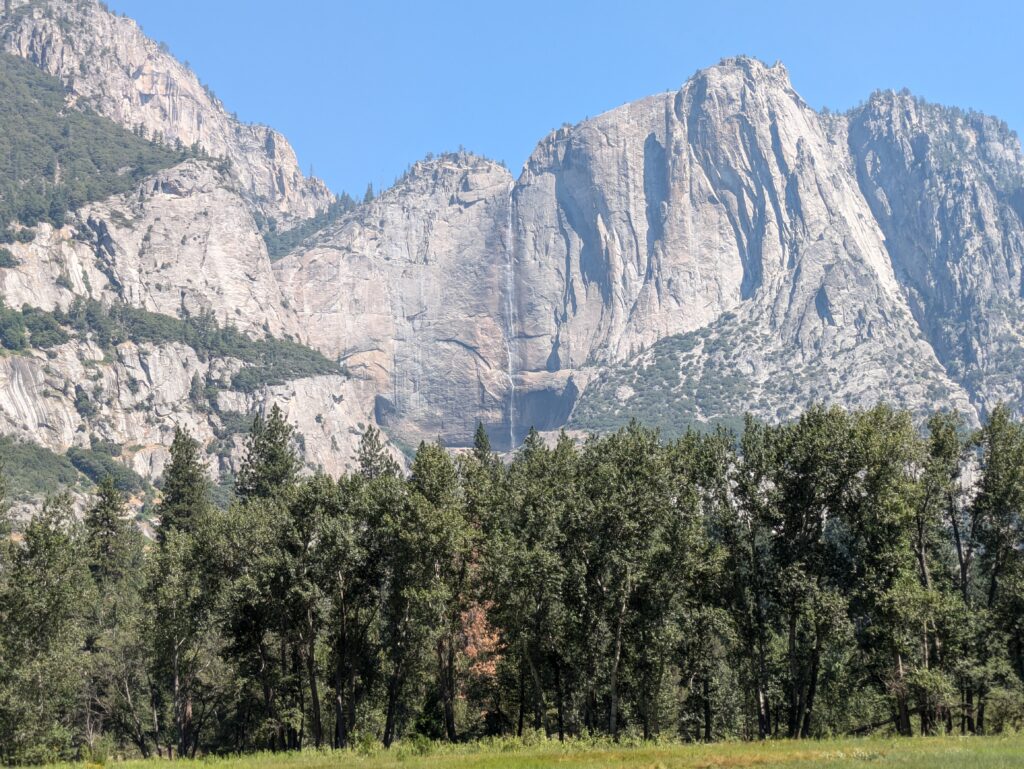
We had been to Yosemite a few times before but not for many years and not in the absolute peak season as we were now. It became immediately clear that people were loving this wonderland to death and the rangers were doing their best to preserve this land while giving everyone a chance to see it.
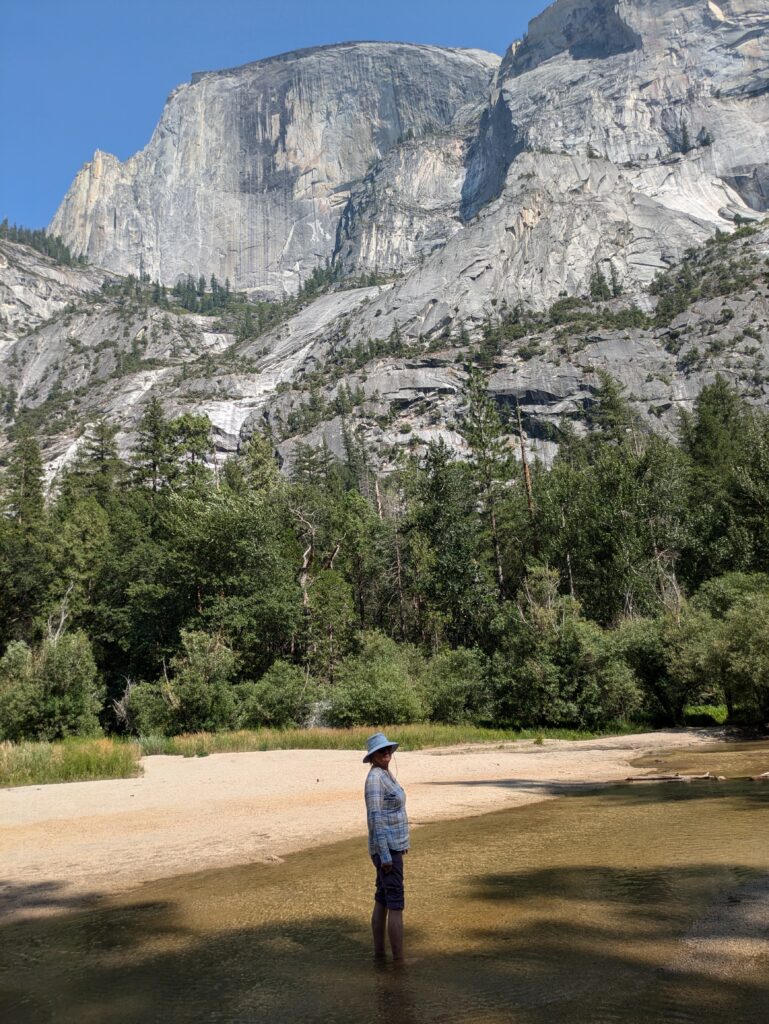
That is why we used almost an hour of our precious day in the valley waiting for either the purple or green shuttle bus to take us to waterfalls, food, scenic points, walks to lakes and shops. Frustrating at times but unavoidable, made worse by the 103°F/39.5°C temperature but compensated for by the amazing views all around us, the wonders of granite vs. glacier in all their glory.
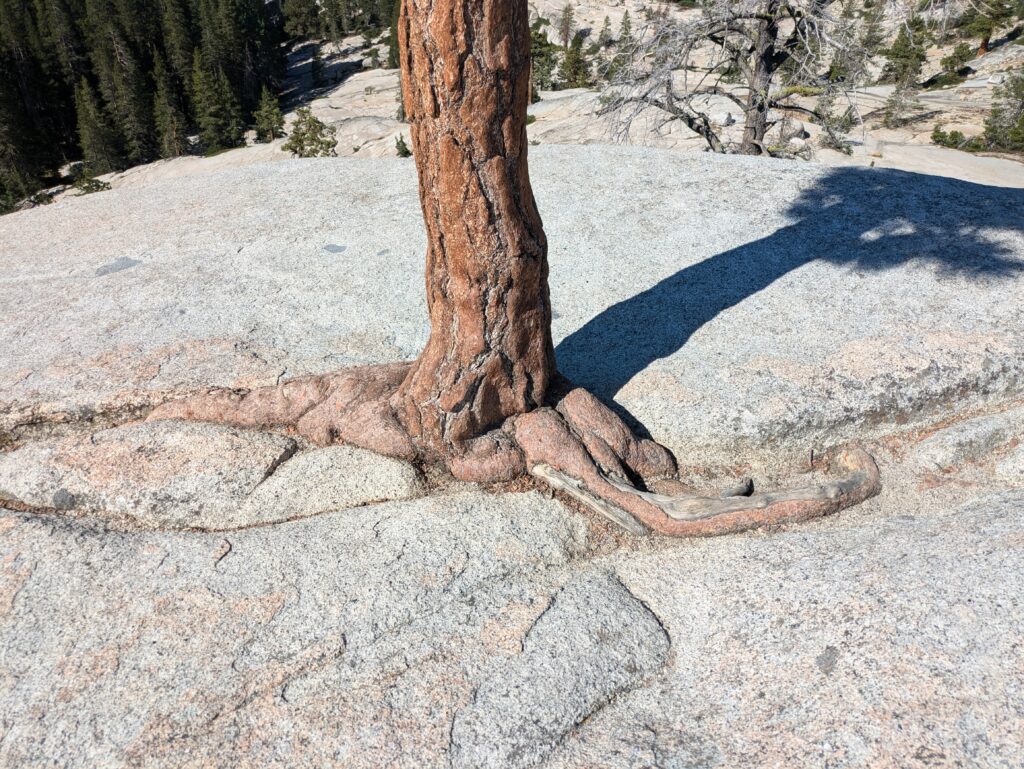
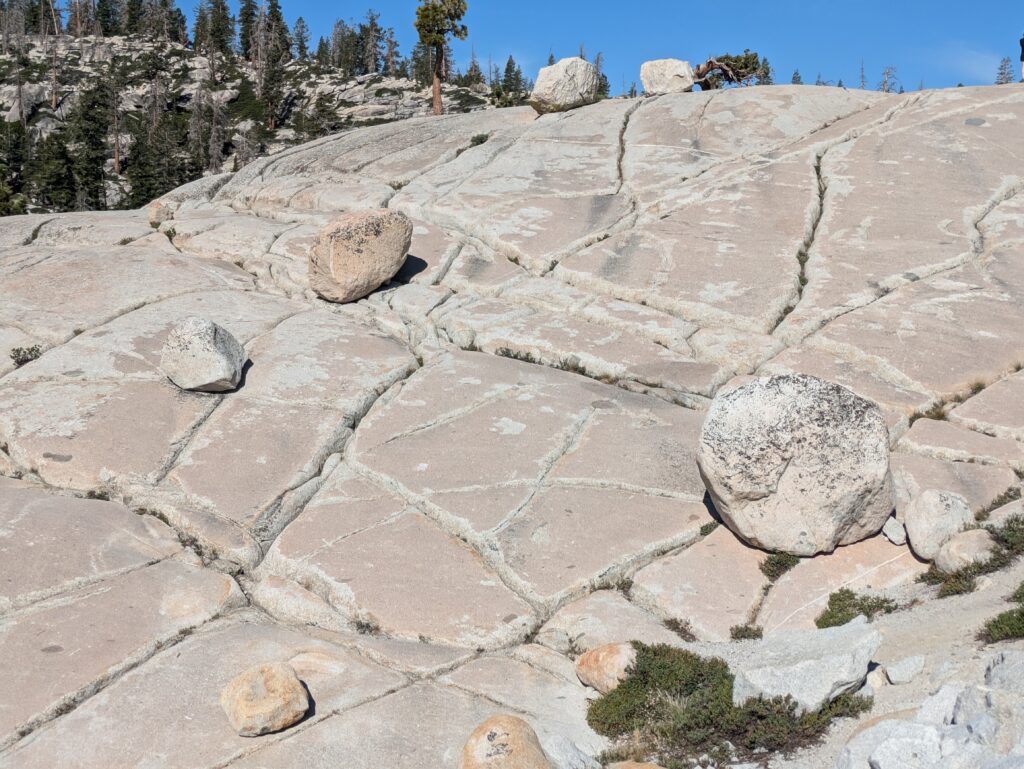
Having overdosed on magnificence, we drove out of the park and found an insalubrious place to spend the night on the side of the road just outside the Yosemite National Park sign. It wasn’t fancy, in fact it was one of the most ordinary camping spots we had ever had. But we enjoyed a cooling swim in the fast-flowing Merced River nearby and the spot was perfect for us because we could turn around and go back into the park the following day.
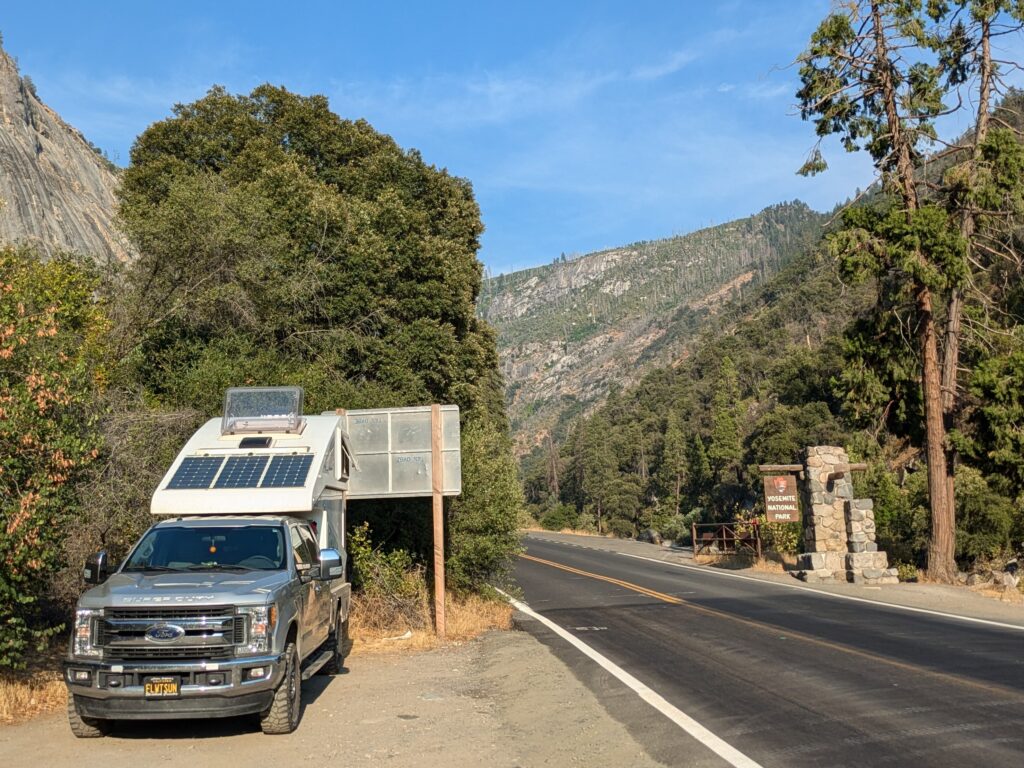
We had one more day on our three day pass and had a couple of objectives in mind. First we visited Bridalveil Falls, at almost 600 feet one of the highest in the park, and drove once again through the valley of the park, enjoying the cool air and lack of crowds at this early hour.
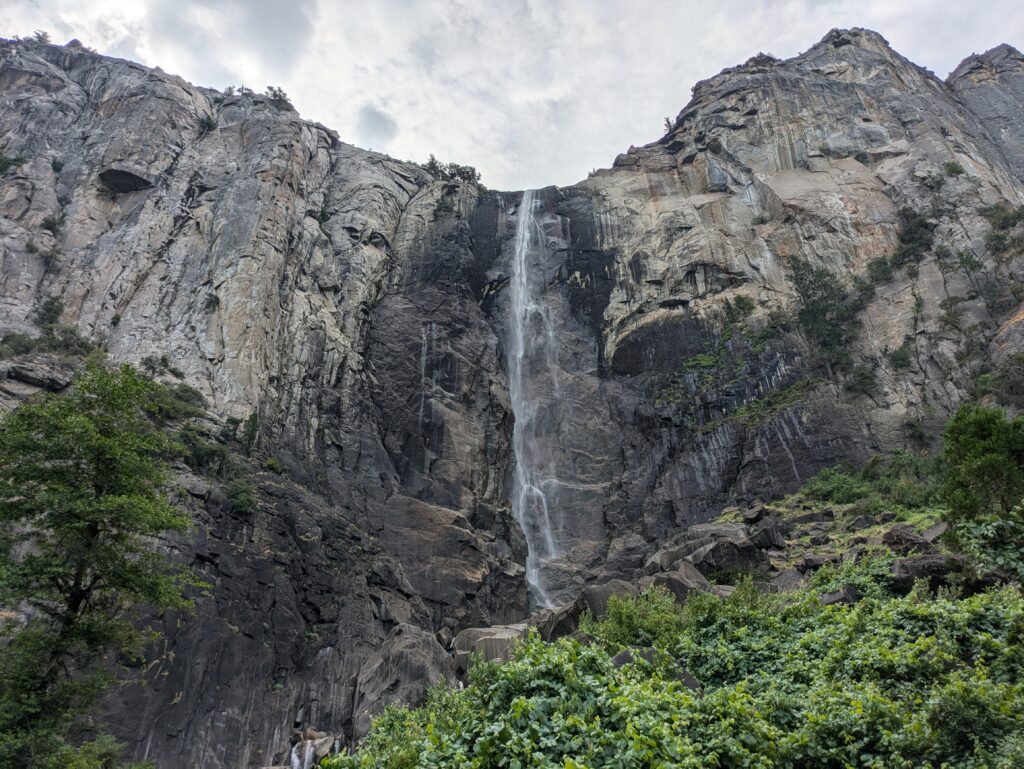
We then followed the winding road up and out of the valley, finally finishing at Glacier Point, often described as having one of the best views in the world. High praise but well deserved, we say, despite the smoky haze from nearby fires. Never mind, we loved gazing straight down into the Yosemite Valley and in particular dined out on wonderful views of famed Half Dome and the waterfall combination of Nevada and Vernal Falls.
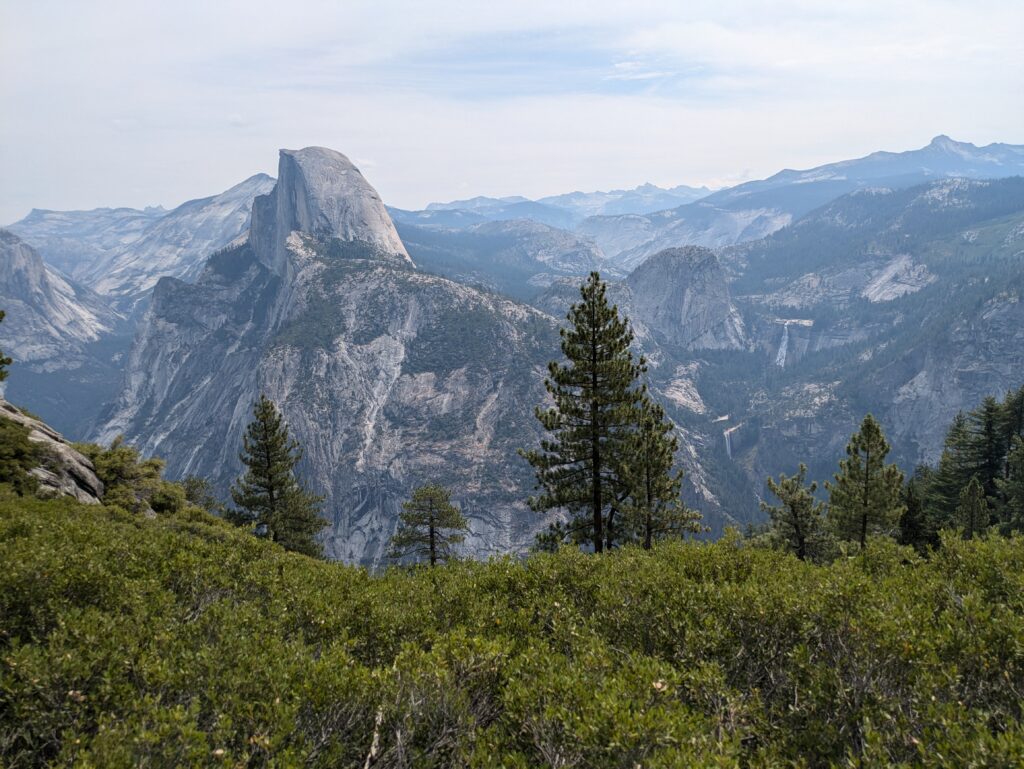
We headed southward through the park but made one last stop at Mariposa Grove which features hundreds of huge Giant Sequoia trees. The Giant Sequoias can live to well over 2,000 years, some of the longest living plants on earth, and are the largest trees by volume in the world (the California coastal redwoods are skinnier but taller).
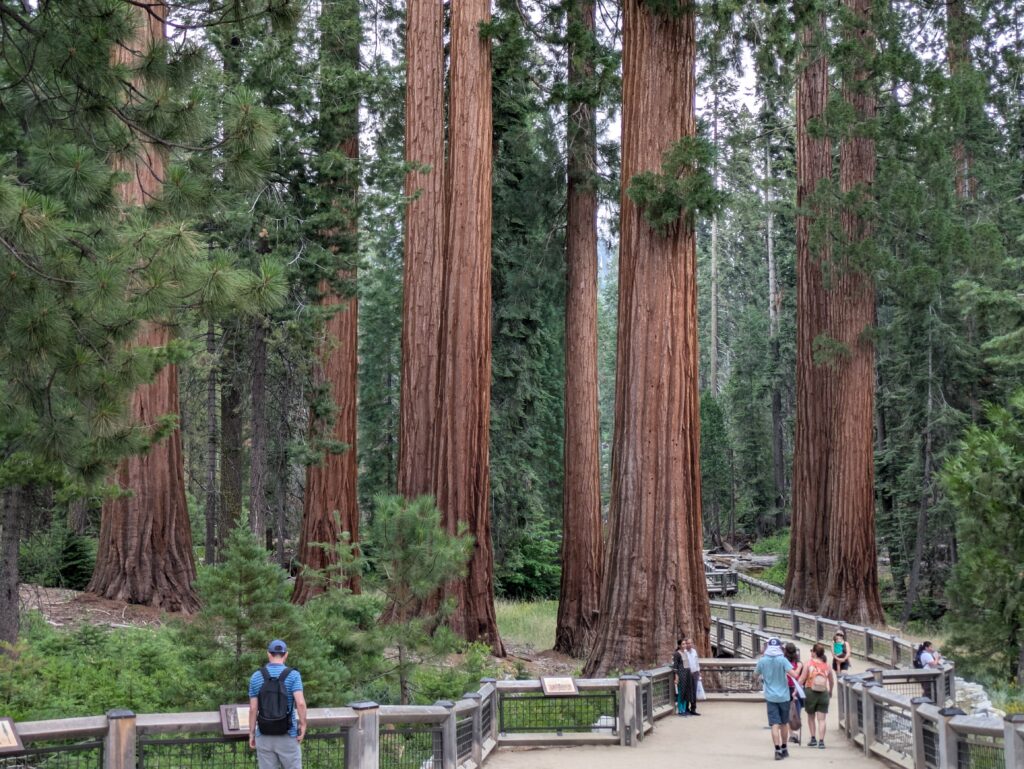
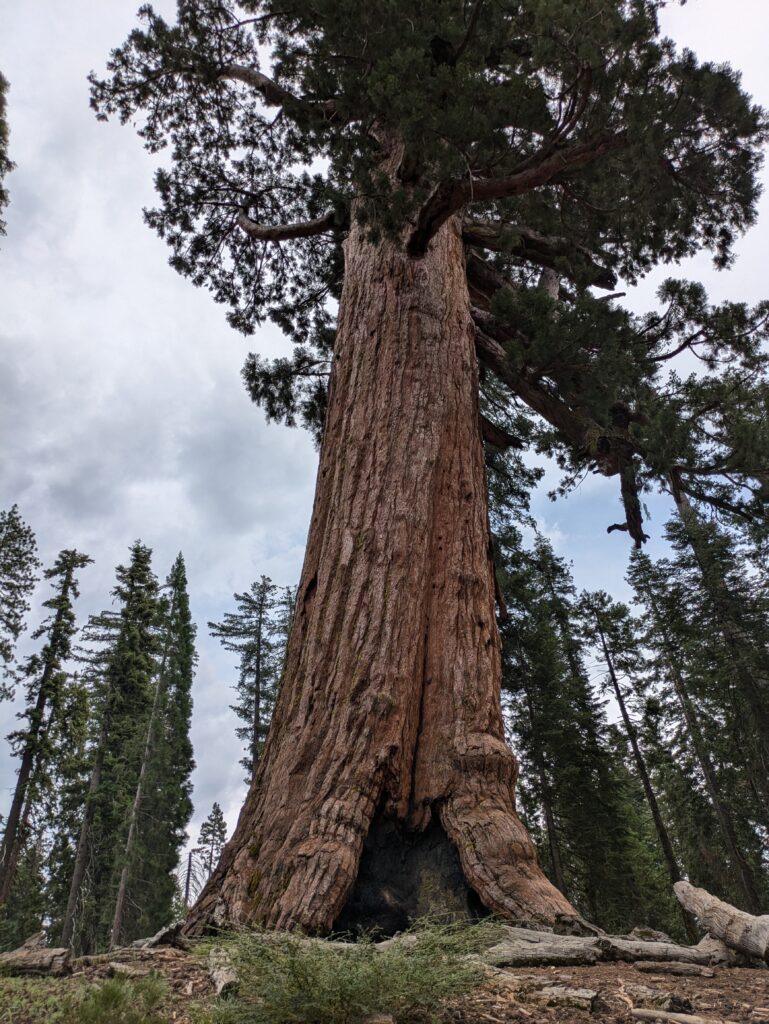
We took another dreaded shuttle bus to the heart of the grove and in a rare bit of light rain – the first we’d had in two months – we walked amongst these gentle giants, cramming our neck to take in their full range. Giant Sequoias defy belief until you see them yourself.
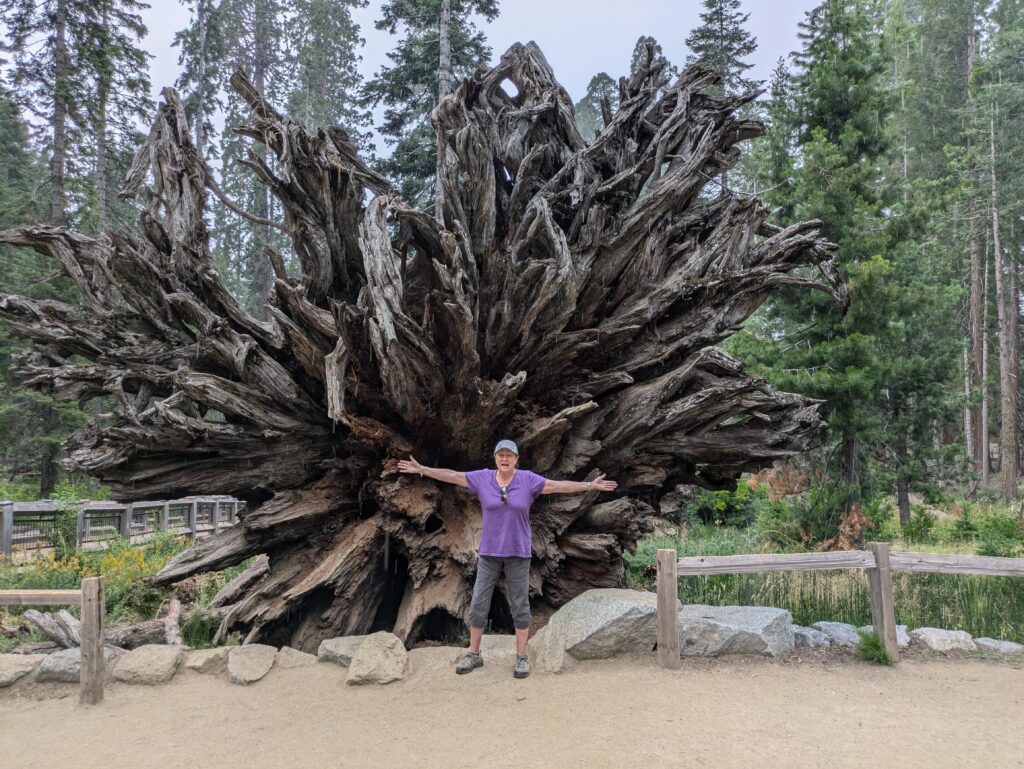
We finally left the park and camped amongst tall sugar pine trees, enjoying the slightly cooler weather and the feeling of having packed in so much of Yosemite in our allotted three days. We’ll be back.
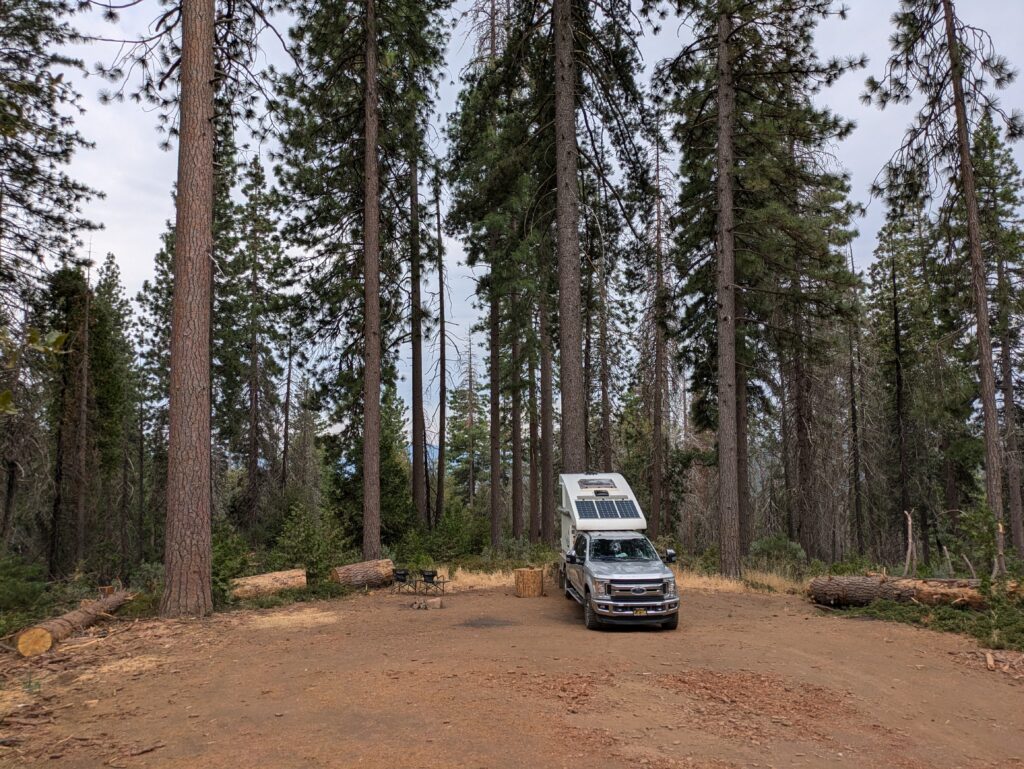

Comments
Yosemite — No Comments
HTML tags allowed in your comment: <a href="" title=""> <abbr title=""> <acronym title=""> <b> <blockquote cite=""> <cite> <code> <del datetime=""> <em> <i> <q cite=""> <s> <strike> <strong>